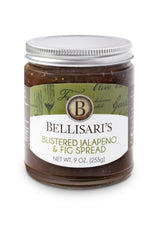
Do you ever find yourself in the bakery wondering what’s the difference between an Italian loaf and a French baguette? Or which one is ciabatta, and which is focaccia? And for goodness sake, which one should I serve with my lasagna/beef bourguignon/tuna noodle casserole?! My goal today is to try to give you some guidelines and rules-of-thumb so that you can confidently choose the bread you want to complement your meal or recipe.
Unfortunately, between low-carb dieting and gluten sensitivities, it seems like bread is a bad word these days. Even so, Americans still eat a lot of it. This is in part because it's inexpensive, extremely versatile, and you can make so many amazing recipes with it.
Bread is a fairly basic element of any meal, but some varieties definitely go better with certain foods or flavor profiles. And while almost anything can be included in a healthy diet if it’s eaten in moderation, for our day-to-day needs, health considerations must be taken into account. How do you know what to buy for daily bread use like breakfast toast, lunch sandwiches, etc.?
The healthiest bread to buy is one that's marked whole grain, whole wheat, or whole oats. Don’t make the mistake of thinking wheat bread is the same as whole wheat bread. Look for the words "whole wheat" or "whole grain" as the first ingredient on the label to be sure that the grains found in that bread are not processed and contain all the original parts of the grain — the bran, the germ, and the endosperm. Those three layers are where the most important nutrients are found, like fiber, healthy fats, B vitamins, minerals, and phytonutrients, which help to fight chronic disease.
Making healthy choices is important, but so is enjoying delicious food. The wider world of breads made with white or other types of processed flours leads us to more than I could possibly cover in one blog post, but we’ll examine some of the more common varieties found in the bakery section of our super markets.
French bread and Italian bread are two types that are always popular, but is there really a difference? French baguettes are crusty on the outside and light and airy inside. Compare that to the commonly found Sicilian loaf, this sesame seed topped bread has a softer crust and a fluffier, denser, chewier crumb or texture inside. An easy way to think of it is French bread traditionally comes with the starters because of its lightness and slight sweetness in taste and texture. Italian bread, on the other hand, is more likely to go with the main to help you mop up all the sauces and leftovers.
Focaccia and ciabatta may look similar, but the two Italian breads are drastically different. Focaccia’s texture is very similar to pizza dough and ciabatta is denser and less soft, in comparison. Focaccia is made as a flatbread while ciabatta is baked as loaves. Fans of focaccia use the bread as the base for a pizza, sandwich bread, or as a flatbread when topped with cheeses, vegetables, or meats. Ciabatta is almost always used as sandwich bread.
Sourdough is a yeasted bread made from a starter — a fermented mixture of flour and water that makes many batches of bread. The resulting loaf has a substantial crust with a soft, chewy center and large air bubbles.
Rye bread is made with a combination of bread flour and rye flour, giving it an assertive rye flavor and a tight crumb. Caraway or dill seeds are often added for an earthy flavor.
Originating in the Middle East, pita is a leavened flatbread made of wheat flour. They are cooked at high temperatures, causing the liquid in the dough to escape. This forms a large air bubble in the center, which becomes a pocket when cut in half — great for a hand-held sandwich. They're also perfect for dipping when cut into wedges and toasted.
Brioche is a French bread made with eggs and butter. It's super light, with a tight crumb and subtle sweetness. It has a completely soft crust that gets its golden hue from an egg wash applied just before baking.
Dinner rolls vary from soft and fluffy to hard and crusty. It really depends on what you like. I love soft yeast rolls fresh from the oven, but I also adore a crusty Kaiser roll! In the roll category, it really is up to personal taste.
These recipes call for specific breads like baguette or Italian loaf because these breads are perfectly suited to accompany or hold up to the other ingredients in the dishes. The delicate yet important flavors of the Blue Cheese Sauce, Pancetta and Pear Baguette work in harmony with the light taste and texture of the bread delivering the ingredients. https://bit.ly/2Tpx7B0 While in our Jalapeno Fig Stuffed French Toast recipe, thick slices of rustic Italian bread stand up to the richness and flavors of the other ingredients. https://bit.ly/2T9RZNh Enjoy experimenting with different breads and let us know about your favorites in the comments.





